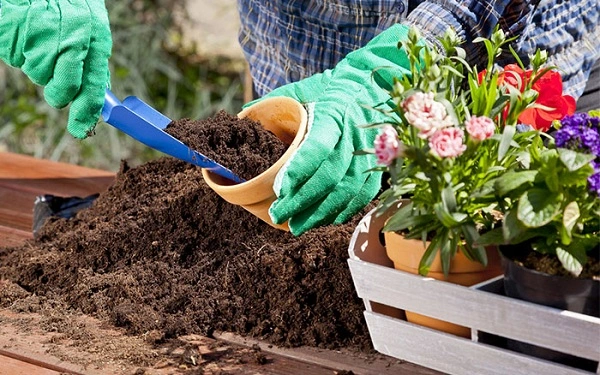Sooner or later transplanting houseplants becomes necessary. When and why you need to transplant plants, how to do it so as not to damage the root system. Here are some tips and step-by-step tips for transplanting plants.
What are the signs that the plant needs to be transplanted?
- The most obvious sign that a houseplant needs to be transplanted is the roots on the soil surface, the germination of roots from the drain hole in the bottom of the pot or its deformation.
- The plant also needs transplanting when it has stopped or slowed down growth.
- Displacement of the plant in the pot may be another sign of transplantation.
If your houseplant has just been brought home from the garden center, let it adapt to the new environment for a few weeks. Young, actively growing houseplants should be transplanted every year in slightly larger pots with fresh soil. Transplanting houseplants that are large in nature, such as ficus or slow-growing plants, can be transplanted every two years; or when they outgrow their pots or grow very tall. If the plant grows well, we can say that it is happy in its pot.
As a rule, houseplants are transplanted at the beginning of active growth – in the spring.
But transplanting plants that bloom in winter should be done in early autumn, after a period of dormancy.

How to choose a pot when transplanting houseplants?
The new pot should be no more than 4 inches wide and 5 inches deep than the old pot. Why? A pot that is much larger gives the roots too much space to grow, excess water, which can contribute to root rot. Do not forget to choose a pot that has drainage holes to drain excess water. The upper part of the plant will not grow until its roots begin to fill the pot.
If you are using a new clay pot, soak it in water for a few hours before planting the plant. The new clay pot is so dry that it will pluck moisture from the soil.
How to transplant a houseplant – step by step:
- To remove the plant from its original pot, turn it to the side and tap. If the plant does not move, you can press on the bottom of the pot to loosen the roots or gently push the knife around the inside of the pot, trying not to damage the roots. If the plant and pot are very large, you can replace the top layer of soil.
- If the roots are wound on the bottom, use your fingers to pull out the roots. Pruning old roots stimulates the growth of new roots and helps the houseplant to enter the new pot.
- Partially fill the new pot with drainage (expanded clay) and soil. Put a houseplant in it, and then fill the sides of the pot with soil. Tamp the ground down with your fingers, especially on the sides of the pot.
- Add water. Add more soil if needed.
Transplanting houseplants is a kind of stress for them, so they need time to recover.
Here are some tips to help your houseplant take after transplanting:
- Do not put the plant in the sun right away, because the sun can be too harsh for a weakened plant.
- Keep the soil evenly moist but not damp. If you notice that the leaves are sluggish – the plant does not get enough water.
- If the leaves turn yellow – too much water.
- High humidity helps to restore the transplanted plant.
- Never feed the plant after transplanting. Its roots were most likely damaged and may suffer from fertilizer burns. Wait at least a month before fertilizing for the root system to strengthen.
Take care of your plants and they will always give you beauty.

